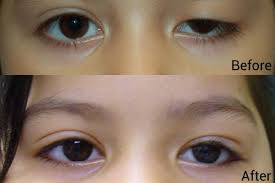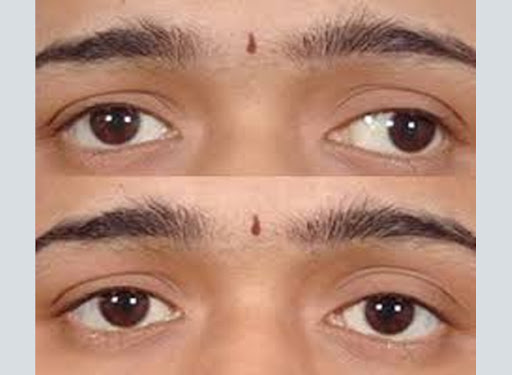Oculoplasty IN Thane?
Oculoplasty in Thnae, is a newly emerging sub-specialty of ophthalmology that deals with diseases of eyelids, orbit, and lacrimal system. It deals with cosmetic as well as reconstructive surgeries such as:
- Botulinum injection
- Dermal fillers
- Lacrimal apparatus surgeries like DCR, DCT, Canalicular intubation, Naso-Lacrimal Duct probing, Naso- Lacrimal Laceration repair.
- Eyelid surgeries like correction of malposition (Ptosis, Ectropion, Entropion), Blepheroplasty, Eyelid reconstruction.
- Surgeries for Orbital diseases like Orbital tumour, Socket reconstruction, Orbital decompression in Thyroid eye diseases


Understanding Oculoplasty: A Comprehensive Guide to Eye Reconstructive and Cosmetic Surgery
Oculoplasty, or ophthalmic plastic surgery, is a specialized branch of ophthalmology that focuses on the surgical treatment of the structures around the eyes, such as the eyelids, tear ducts, and the orbit (the bony cavity around the eye). This type of surgery can be both functional and cosmetic, addressing medical concerns while also improving the aesthetic appearance of the eyes and surrounding areas.
Oculoplasty is vital for individuals dealing with eye conditions that affect not only their appearance but also their vision, comfort, and quality of life. Whether for medical reasons or cosmetic enhancement, oculoplastic surgery can make a significant difference in how patients feel and see the world.
What is Oculoplasty?
Oculoplasty refers to a wide range of procedures designed to correct, restore, or enhance the structures around the eyes. These surgeries can address issues such as droopy eyelids, blocked tear ducts, tumors, trauma to the eye area, or deformities resulting from disease or injury.
Common oculoplastic surgeries include:
-
Eyelid Surgery (Blepharoplasty): This is one of the most common oculoplastic procedures. It involves removing excess skin, fat, or muscle from the eyelids to correct droopy or sagging eyelids (ptosis). This surgery can have both functional benefits, like improving vision obscured by sagging eyelids, and cosmetic effects, such as rejuvenating the appearance of tired or aged eyes.
-
Tear Duct Surgery (Dacryocystorhinostomy or DCR): Blocked tear ducts can lead to excessive tearing, infections, and irritation. Tear duct surgery is performed to create a new pathway for tears to drain from the eyes, preventing discomfort and potential damage to the eye.
-
Orbital Surgery: The orbit, the bony structure surrounding the eye, may require surgery in cases of trauma, tumors, or diseases such as thyroid eye disease (Graves’ disease). Orbital surgery can correct bulging eyes, eye misalignment, or damage caused by accidents.
-
Eyelid Tumor Removal: Oculoplastic surgeons are trained to remove tumors in the delicate areas around the eyes while preserving as much normal tissue as possible. Tumors in this region can be benign or malignant, so early detection and removal are critical.
-
Reconstructive Surgery: Oculoplastic reconstructive surgery is often necessary after trauma, accidents, or prior surgeries that have altered the normal function or appearance of the eyelids or orbit. This can include procedures to restore tear function, reposition eyelids, or reconstruct damaged areas.
-
Cosmetic Oculoplasty: For patients seeking to improve the appearance of their eyes, cosmetic oculoplasty offers procedures like blepharoplasty (to reduce baggy or sagging eyelids), brow lifts, and treatments for dark circles or fine lines around the eyes.
Who Needs Oculoplasty?
Oculoplastic surgery is recommended for individuals who experience a range of functional or cosmetic issues involving the eye area. Some common reasons for oculoplastic surgery include:
- Ptosis (droopy eyelids): This condition can impair vision and give the eyes a tired or aged appearance.
- Excessive tearing: Blocked or damaged tear ducts can lead to excessive tearing, infections, or dry eye.
- Eye injuries or trauma: Accidents or injuries affecting the area around the eyes may require reconstructive surgery to restore function and appearance.
- Eyelid abnormalities: Conditions such as entropion (inward-turning eyelids) or ectropion (outward-turning eyelids) can cause irritation, dryness, and potential damage to the cornea.
- Cosmetic concerns: Some patients seek cosmetic oculoplasty to enhance the appearance of their eyes and address issues such as sagging skin, wrinkles, or puffiness.
Benefits of Oculoplastic Surgery
-
Improved Vision: In cases where sagging eyelids obstruct vision, oculoplastic surgery can restore full field of view and improve eyesight. This is especially beneficial for patients whose droopy eyelids impair daily activities like reading or driving.
-
Enhanced Appearance: Cosmetic oculoplastic procedures can have a transformative effect, rejuvenating the eyes and making patients look more youthful, awake, and refreshed. Eyelid surgery can significantly reduce the appearance of age-related wrinkles, bags, and sagging.
-
Increased Comfort: Conditions like blocked tear ducts, inward-turning eyelids, or bulging eyes can cause chronic discomfort. Oculoplastic surgery corrects these problems, providing relief from symptoms like excessive tearing, dryness, or irritation.
-
Restored Function: Reconstructive oculoplastic surgeries address medical issues that impact the normal functioning of the eyes and surrounding structures. Whether it’s repairing damage from an injury or removing a tumor, these surgeries help restore the eye’s ability to function properly.
-
Boost in Confidence: Many patients seek oculoplastic surgery to improve their appearance and regain confidence. Cosmetic improvements around the eyes can have a profound impact on self-esteem and quality of life.
What to Expect During Oculoplastic Surgery
Oculoplastic surgery is typically performed by a specialized ophthalmologist trained in both eye health and plastic surgery. Depending on the complexity of the procedure, surgery can be done under local or general anesthesia.
-
Pre-Surgery: Before surgery, a thorough evaluation is conducted to determine the best treatment plan. This includes reviewing the patient’s medical history, examining the condition of the eyes and surrounding structures, and discussing desired outcomes.
-
Procedure: Most oculoplastic surgeries are minimally invasive and can be performed on an outpatient basis. The length of the surgery depends on the complexity of the procedure. For example, eyelid surgery may take about 1-2 hours, while more extensive reconstructive surgery may require more time.
-
Recovery: Recovery times vary depending on the type of surgery, but most patients can return to normal activities within a week or two. Swelling and bruising are common after oculoplastic procedures but typically subside within a few days. It’s important to follow post-operative care instructions to ensure proper healing and optimal results.
Conclusion
Oculoplasty plays a critical role in both functional and aesthetic eye care. Whether you’re seeking relief from a medical condition or want to improve the appearance of your eyes, oculoplastic surgery offers solutions that enhance vision, comfort, and confidence. If you’re experiencing issues with your eyelids, tear ducts, or the area around your eyes, consult with an experienced oculoplastic surgeon to explore the options that can improve your quality of life.

